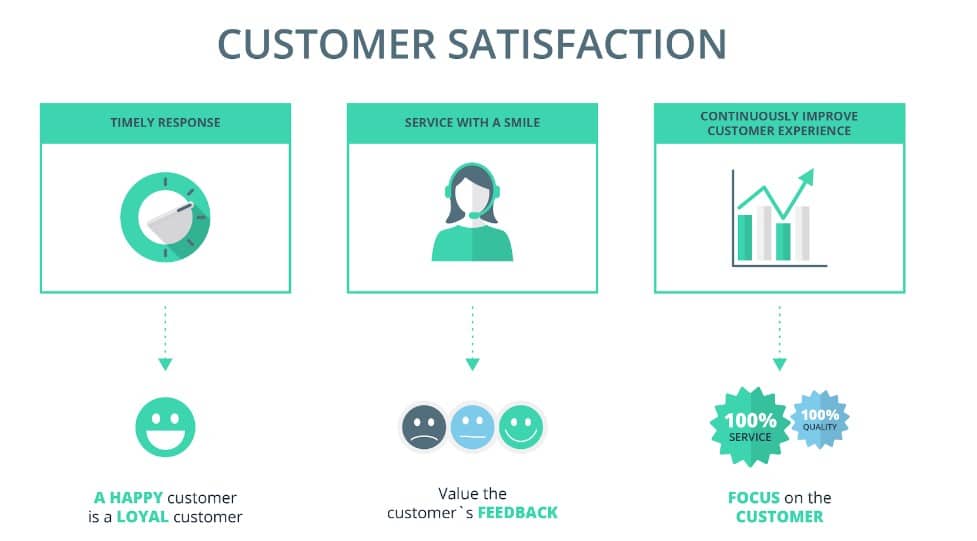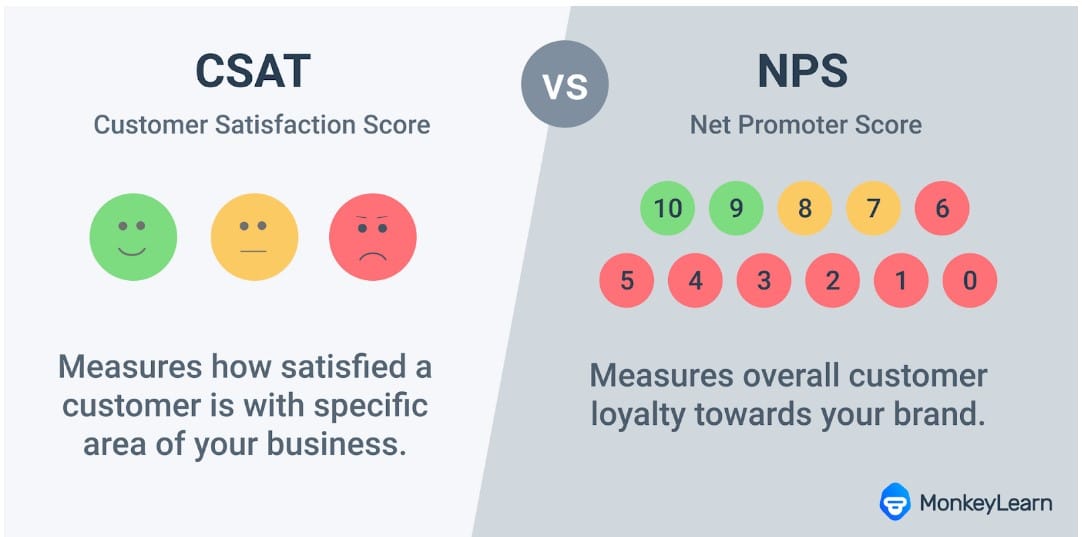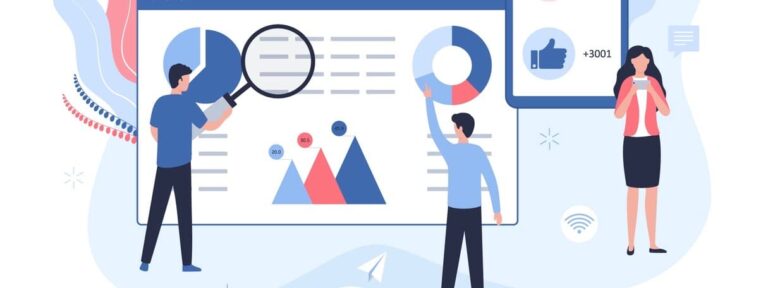In today’s fiercely competitive business environment, customer retention has become a cornerstone of sustainable success. While customer acquisition is undeniably important, retaining existing customers is equally, if not more, crucial for long-term growth and profitability. To thrive, businesses must meticulously monitor and manage key customer retention metrics.
This article explores seven indispensable customer retention metrics that every business should track. These metrics serve as a compass, guiding companies toward understanding and enhancing their customer relationships.
In this ever-evolving marketplace, mastering these customer retention metrics is paramount. They not only aid in gauging the health of your customer relationships but also provide actionable insights to cultivate lasting bonds, foster loyalty, and drive sustainable business growth. This article will delve deeper into each metric, providing strategies to harness their power for your business’s benefit.

Here are some of the metrics to monitor and analyze key customer retention metrics.
Customer churn rate
Customer churn rate, often referred to as churn, is a critical metric that measures the percentage of customers who stop using a company’s product or service within a specific period. It’s a key indicator of customer attrition and is particularly vital for businesses aiming to maintain a healthy customer base and sustainable growth.
A high churn rate can be a cause for concern as it signifies that a significant portion of your customer base is leaving, which can lead to a decline in revenue and profitability. Understanding the reasons behind churn is essential for devising effective customer retention strategies.
To calculate churn rate, divide the number of customers lost during a given time frame by the total number of customers at the beginning of that period. The result is usually expressed as a percentage. Alternatively, use a churn prediction tool as an accurate and efficient method of predicting customer churn and it can also be integrated into your software similar to the integration of Paypal with Quickbooks.
Reducing churn rate often involves improving customer experiences, addressing pain points, and ensuring that your product or service continues to meet customer needs over time. Regularly monitoring and analyzing churn rate can help businesses identify trends, make data-driven decisions, and take proactive measures to retain customers, ultimately contributing to long-term success and stability in today’s competitive market.

Customer Lifetime Value
Customer Lifetime Value (CLV) is a fundamental metric that quantifies the total value a customer is expected to generate for a business throughout their entire relationship. It plays a pivotal role in shaping a company’s marketing, sales, and customer retention strategies. Understanding CLV is essential for making informed decisions on customer acquisition costs, marketing budgets, and overall business growth.
To calculate CLV, one typically considers factors like average purchase value, purchase frequency, and customer retention rate over a specific period. The formula for CLV varies across industries and businesses, but it generally estimates the gross margin a company can anticipate from a customer over their lifetime.
CLV offers several key benefits:
- Strategic Resource Allocation: By knowing the CLV of different customer segments, businesses can allocate their resources more efficiently, focusing marketing efforts and resources on high CLV customers.
- Customer Segmentation: CLV helps segment customers based on their value to the business, enabling tailored marketing strategies for each group.
- Retention Strategies: It guides the development of customer retention initiatives, as retaining high CLV customers can significantly impact long-term profitability.
- Competitive Advantage: Companies with a strong CLV focus tend to outperform competitors by building stronger, more profitable customer relationships.
- Financial Planning: CLV aids in financial forecasting and budgeting by providing insights into future revenue streams.
In today’s competitive landscape, understanding and optimizing CLV is critical for sustainable growth and profitability. It empowers businesses to make data-driven decisions that maximize the value of their customer base over time.
Net Promoter Score
Net Promoter Score (NPS) is a widely recognized and invaluable metric that assesses customer loyalty and gauges overall satisfaction with a company’s products, services, or brand. Introduced by Fred Reichheld in 2003, NPS has become a cornerstone of customer experience management and a vital tool for businesses seeking to understand and improve their relationships with customers.
At its core, NPS revolves around a single, straightforward question: “On a scale of 0 to 10, how likely are you to recommend our company/product/service to a friend or colleague?” Based on their responses, customers are classified into three categories:
- Promoters (Score 9-10): These are enthusiastic, loyal customers who are highly likely to recommend your business to others. They contribute positively to your brand’s growth.
- Passives (Score 7-8): Passives are satisfied customers but not necessarily loyal advocates. They are unlikely to proactively promote your brand but are also less likely to speak negatively about it.
- Detractors (Score 0-6): Detractors are dissatisfied customers who may spread negative word-of-mouth and pose a risk to your reputation and growth.
To calculate the NPS, you subtract the percentage of detractors from the percentage of promoters. The resulting score can range from -100 (all detractors) to +100 (all promoters).
NPS provides a clear and actionable measure of customer sentiment, allowing businesses to identify areas for improvement, enhance customer satisfaction, and foster customer advocacy. This metric’s simplicity and effectiveness have made it an essential tool for businesses of all sizes and industries, helping them navigate the complex landscape of customer loyalty and retention.

Customer Satisfaction
Customer Satisfaction (CSAT) is a vital metric used by businesses to gauge the level of contentment customers have with their products, services, or interactions. It provides valuable insights into the overall customer experience and is a key indicator of a company’s performance in meeting customer expectations.
Typically measured on a scale, often ranging from 1 (very dissatisfied) to 5 (very satisfied) or 1 (very dissatisfied) to 7 (very satisfied), CSAT surveys ask customers to rate their satisfaction with a specific interaction, transaction, or experience with a company. The responses are then aggregated and analyzed to determine an average satisfaction score, expressed as a percentage.
CSAT surveys are versatile and can be applied to various touchpoints in the customer journey, such as post-purchase surveys, customer support interactions, or website usability assessments. This flexibility allows businesses to pinpoint areas that require improvement and make data-driven decisions to enhance customer satisfaction.
The insights derived from CSAT surveys enable companies to:
- Identify Pain Points: CSAT helps pinpoint specific pain points in the customer experience, allowing businesses to focus their efforts on addressing these issues.
- Measure Progress: Over time, CSAT measurements provide a clear indication of whether changes or improvements have positively impacted customer satisfaction.
- Enhance Customer Loyalty: Satisfied customers are more likely to become repeat buyers and brand advocates, contributing to long-term business success.
- Benchmark Against Competitors: CSAT scores can be compared to industry benchmarks, helping companies understand how they stack up against competitors in terms of customer satisfaction.
In today’s customer-centric business landscape, monitoring CSAT is crucial for maintaining and improving customer relationships, which, in turn, drives customer retention and fosters brand loyalty. It’s an indispensable tool for businesses striving to meet and exceed customer expectations.
Retention Strategies
Retention strategies are a set of deliberate actions and tactics employed by businesses to retain their existing customers, enhance their loyalty, and extend their customer lifetime value. These strategies are essential in today’s competitive market, where retaining customers can be more cost-effective than acquiring new ones. Here are key components and approaches to effective retention strategies:
- Personalization: Tailoring products, services, and communications to individual customer preferences fosters a sense of connection and loyalty. One example is selling customizable products, where customers can create products that meet their individual specifications. Providing this highly tailored customer experience is likely to see customers return time and again.
- Customer Support and Engagement: Providing exceptional customer service and actively engaging with customers through various channels can build trust and long-lasting relationships.
- Loyalty Programs: Rewarding loyal customers with incentives, discounts, or exclusive offers can encourage repeat business.
- Feedback and Improvement: Actively seeking and acting upon customer feedback demonstrates a commitment to improvement and customer satisfaction.
- Predictive Analytics: Utilizing data and predictive analytics helps identify customers at risk of churning, allowing for proactive intervention. Analyze customer behavior, patterns and create reports to help you predict their next steps.
- Content Marketing: Providing valuable content, such as educational resources / guides or informative newsletters, keeps customers engaged and informed.
- Community Building: Creating online communities or forums where customers can interact with each other and the brand can foster a sense of belonging.
- Surprise and Delight: Occasionally surprising customers with unexpected rewards or gestures can leave a lasting positive impression, such as special discounts or swag like a hoodie or mug.
- Regular Communication: Keeping customers informed about updates, new offerings, and promotions maintains their interest.
- Quality Assurance: Consistently delivering high-quality products or services is fundamental to retaining customer trust.
Successful retention strategies are dynamic and adaptable, as customer preferences and market conditions evolve. By prioritizing customer satisfaction and employing these strategies, businesses can not only retain their customer base but also turn satisfied customers into advocates who promote their brand, ultimately driving sustainable growth and profitability.
Customer Engagement
Customer engagement is a multifaceted concept that reflects the level of interaction, involvement, and emotional connection customers have with a brand, product, or service. It goes beyond mere transactions and focuses on building long-term, meaningful relationships. Effective customer engagement is pivotal for businesses aiming to foster loyalty, increase customer lifetime value, and drive sustainable growth.
Key aspects of customer engagement include:
- Interactions: Encouraging customers to actively interact with your brand through various touchpoints, such as social media, email, websites, landline phone service, and customer service channels.
- Personalization: Tailoring experiences and communications to individual customer preferences and behaviors, making customers feel valued and understood.
- Content: Providing valuable and relevant content, such as blogs, videos, and webinars, that educates, entertains, or solves customer problems.
- Feedback and Listening: Actively seeking and listening to customer feedback to understand their needs and concerns and making improvements accordingly.
- Community Building: Creating a sense of community where customers can connect with each other and the brand, sharing experiences and insights.
- Customer Support: Offering prompt and effective customer support to address issues and inquiries, ensuring a positive experience. Outsourcing Live chat services ensure fast, and reliable customer support.
- Reward Programs: Implementing loyalty or reward programs to incentivize repeat business and engagement.
- Surveys and Polls: Conducting surveys and polls to gather customer opinions and preferences, showing that their input is valued.
- Gamification: Incorporating gamification elements to make interactions more enjoyable and encourage continued engagement.
- Consistency: Maintaining a consistent brand identity and message across all channels to reinforce customer trust and recognition.
Effective customer engagement strategies require a deep understanding of your target audience and continuous efforts to build and nurture relationships. By fostering engagement, businesses can create a loyal customer base that not only stays with them but also becomes advocates, driving referrals and contributing to sustained success in today’s competitive marketplace.
Customer Feedback and Complaints
Customer feedback and complaints are invaluable sources of information for businesses seeking to improve their products, services, and overall customer experience. They provide direct insights into customer satisfaction, pain points, and areas requiring attention. Managing feedback and complaints effectively is essential for fostering customer loyalty and driving continuous improvement.
Feedback encompasses both positive and negative comments, suggestions, and opinions that customers share with a business. Positive feedback reinforces what a company is doing right, while negative feedback and complaints highlight areas for improvement. Here’s why they are crucial:
- Insight into Customer Needs: Feedback offers a window into customer expectations, helping businesses align their offerings with what customers value most.
- Quality Improvement: Complaints pinpoint specific issues that need immediate attention, driving product or service enhancements.
- Customer Retention: Responsiveness to complaints can turn dissatisfied customers into loyal ones, as they appreciate a company’s commitment to rectifying problems.
- Brand Reputation: Handling complaints professionally and effectively can enhance a brand’s reputation, showcasing a commitment to customer satisfaction.
- Innovation: Innovative ideas and suggestions from customers can lead to the development of new products or services.
To manage feedback and complaints successfully, businesses should:
- Listen Actively: Pay close attention to what customers are saying, across all channels, and acknowledge their concerns promptly.
- Resolve Promptly: Address complaints and issues in a timely and satisfactory manner to prevent escalation.
- Learn and Adapt: Use feedback to inform business strategies and improve processes continuously.
- Communicate: Keep customers informed about the resolution process and the steps taken to address their concerns.
- Thank and Reward: Show appreciation to customers for their feedback, even if it’s negative, as it provides an opportunity for growth.
By actively engaging with customer feedback and complaints, businesses can demonstrate their commitment to customer satisfaction, strengthen relationships, and ultimately thrive in a competitive market.
Conclusion
In conclusion, tracking customer retention metrics is not just a choice for businesses; it’s a necessity in today’s competitive landscape. These metrics offer a roadmap to understanding and enhancing customer relationships, which is fundamental for long-term success and profitability.
Customer churn rate reveals the rate at which customers are leaving, prompting businesses to take action to reduce attrition. Customer Lifetime Value (CLV) helps in understanding the long-term value of customers, guiding resource allocation and strategic decisions.
Net Promoter Score (NPS) and Customer Satisfaction (CSAT) provide direct insights into customer sentiment and loyalty, helping companies measure the effectiveness of their customer experience initiatives. Repeat purchase rate showcases loyalty, while customer engagement metrics offer a window into how actively customers interact with your brand.
Finally, customer feedback and complaints are essential for identifying pain points and areas needing improvement, allowing businesses to address issues promptly and enhance the overall customer experience.
In a world where customer expectations are constantly evolving, businesses that proactively monitor and optimize these customer retention metrics are better equipped to adapt, evolve, and thrive. These metrics not only provide a snapshot of the present but also serve as a compass for navigating the future, ensuring that businesses can not only acquire customers but also retain them, foster loyalty, and drive sustainable growth.








